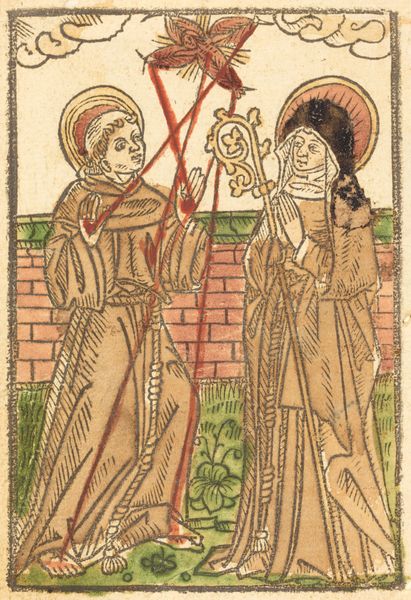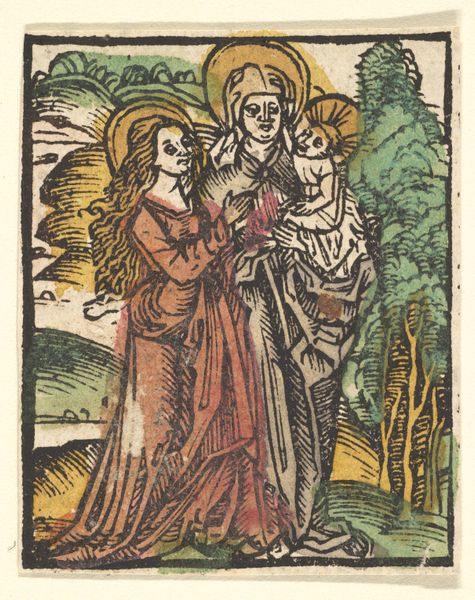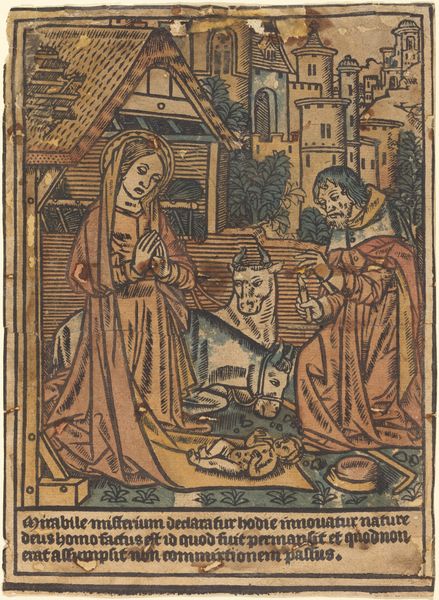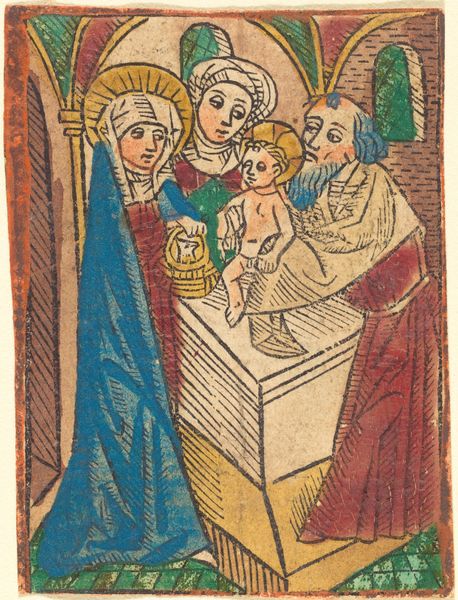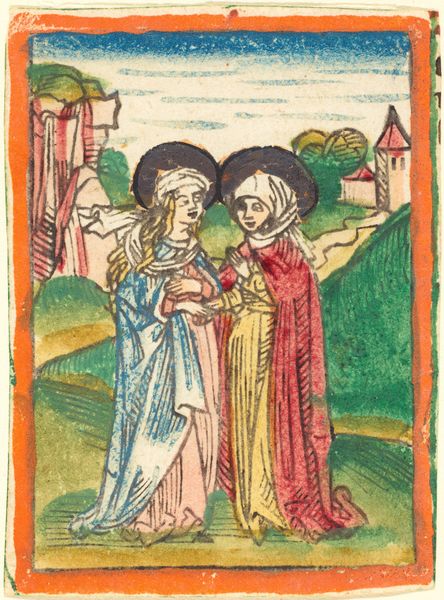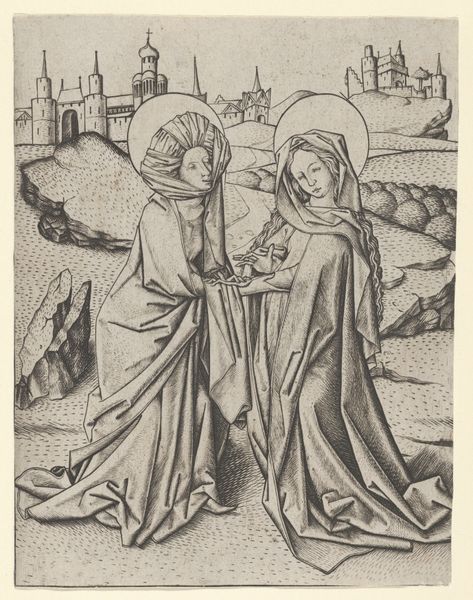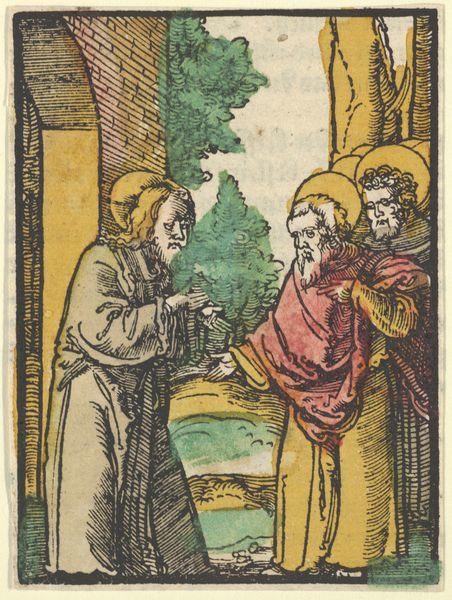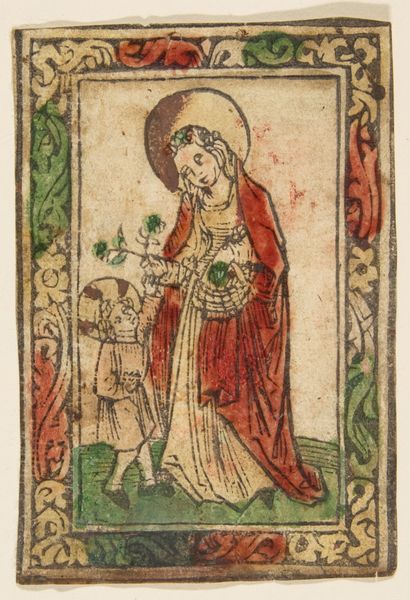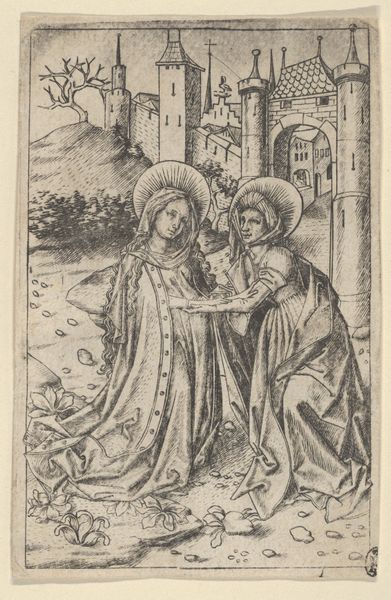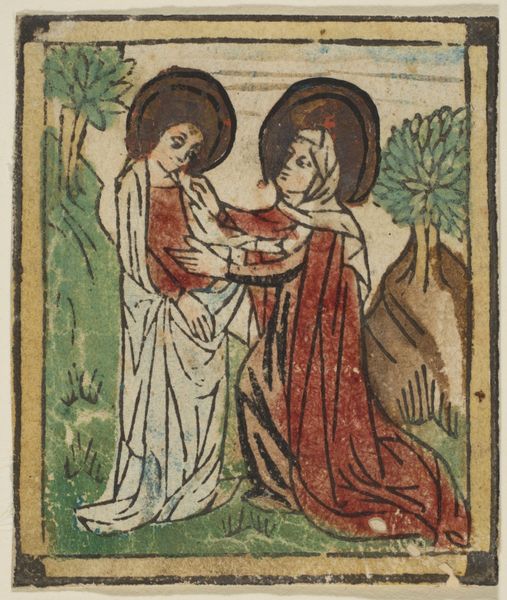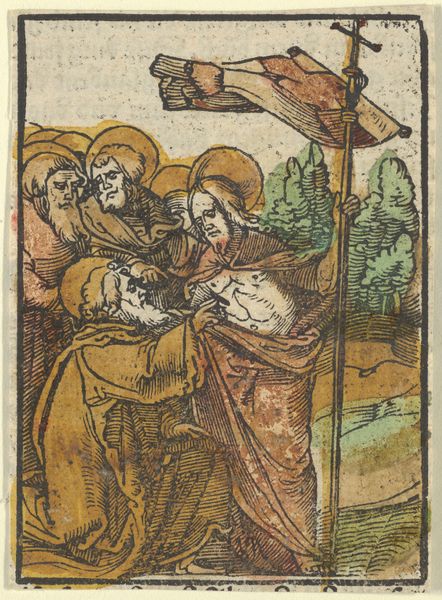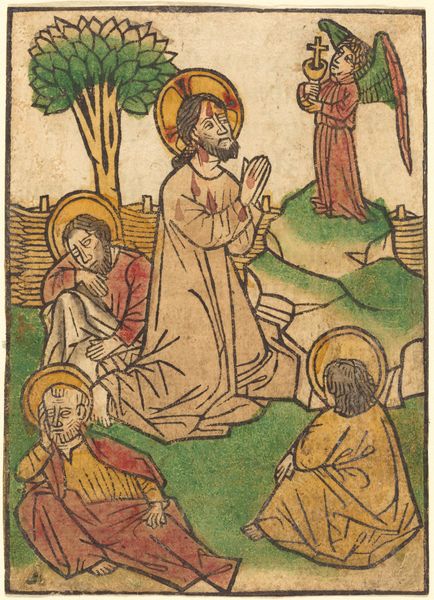
print, woodcut
#
medieval
#
narrative-art
# print
#
figuration
#
woodcut
Copyright: National Gallery of Art: CC0 1.0
Curator: This woodcut print, titled "Visitation," depicts a biblical scene. Notice anything about the figures? Editor: I'm struck by the linear quality—the bold lines give it a sense of gravity. It feels solid, even monumental despite the modest size. And those haloes, such simple circles, amplify the holy nature of the image. Curator: Indeed. “Visitation” portrays the meeting of Mary and Elizabeth, both pregnant, a powerful image of female solidarity and divine intervention, frequently depicted in religious art and devotional objects during the Medieval period. Woodcuts, especially, allowed for wider dissemination of these images, embedding these stories within the larger culture. Editor: That certainly clarifies its cultural significance, because formally, the landscape is flattened and rendered with such economical strokes, yet these characters project such strength of presence within that relatively meager space. The meeting of their hands creates an energetic focus. Curator: Precisely. The composition reinforces the importance of the moment. These kinds of printed images became essential ways in which many people visually comprehended religious narratives and these served not just a devotional function but a political one in solidifying the church’s doctrine during this period of significant religious and social change. Editor: Yes. Now, considering the lines, I notice their purposeful application gives the garments their rich texture, too, while subtly modeling their forms. Light and shadow rendered so starkly enhances its solemn atmosphere. Curator: That interplay of light and dark really was something enabled by the development and refinements to the woodcut process. Artists and workshops experimented with lines of varying thickness, or cross-hatching techniques, all to give the figures more life or the stories, more drama. But how audiences interpret them certainly depended on where they stood within society. Editor: I agree completely. Considering all the work's individual elements, from the stark composition to the expressive rendering, helps unlock its depth and purpose. Curator: For me, viewing it is like glimpsing a moment when faith, art, and society truly intertwined, when one impression from one block held so much influence and possibility.
Comments
No comments
Be the first to comment and join the conversation on the ultimate creative platform.
